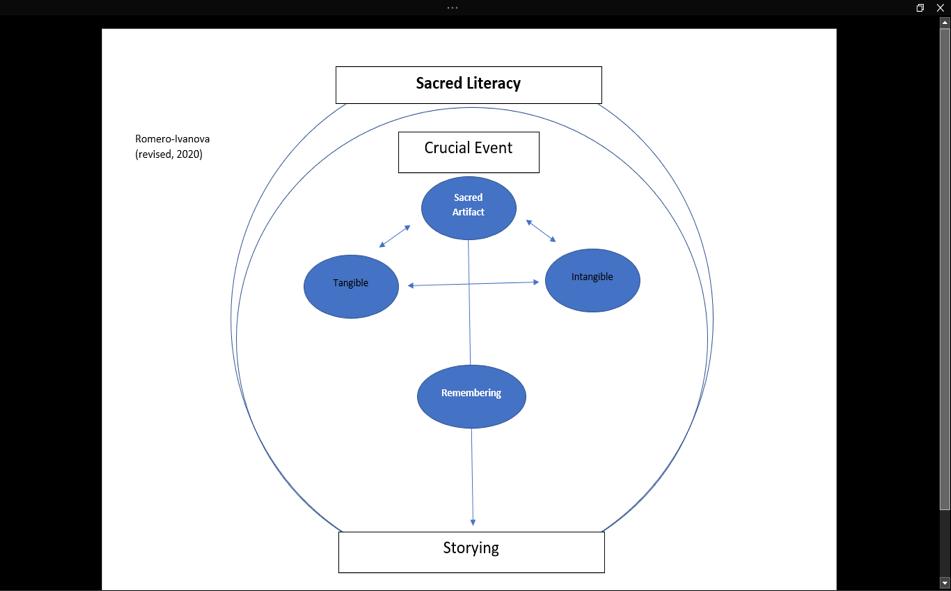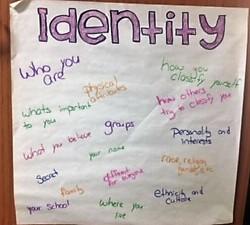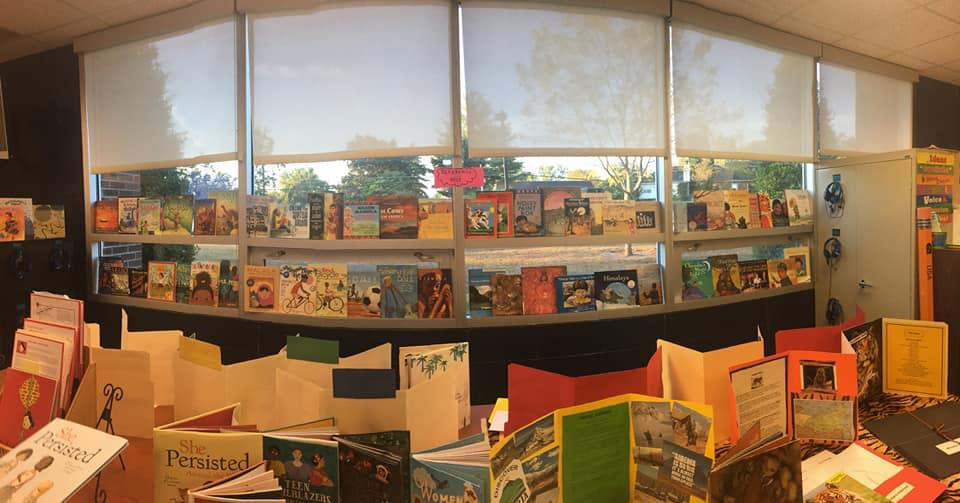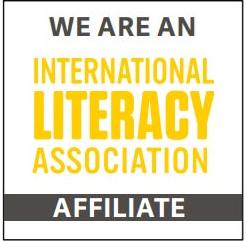
14 minute read
Narrative spaces: Opportunities for students’ sacred literacies within the classroom
NARRATIVE SPACES: PROVIDING OPPORTUNITIES FOR STUDENTS’ SACRED LITERACIES WITHIN THE CLASSROOM
Christina L. Romero-Ivanova
Advertisement
A person needs to vent. Everyone needs that outlet but not everyone can afford a psychologist for Tuesday night therapy. Thus, incorporating this spoken word into the classroom will change the climate or the culture of a room. Students will know that there is a freedom andsafety net in this classroom. -Heather, Elementary Education student
Spoken Word
In the above quotation, Heather (a former elementary education student of mine) reflects on a unit of spoken word poetry we completed in our Reading Methods I course, whichI teach every semester that includes sharing poems and specifically, spoken word poems we create. In her reflection, Heather notes that using slam/spoken word poetry in the classroom can be therapeutic, helps to change the classroom climate, and creates a safe space in which class members can share their experiences with others. Heather notes, “But for some, especially those students who have gone through difficult times in life, Spoken Word is a lifeline.” Spoken Word has been defined as purposeful and meaningful poetry that is verbally transmitted in a cadenced rhythm (Fisher, 2005; SomersWillett, 2016). I had first observed Spoken Word –a blending of smooth rhythmic phrases, narrated ellipses of trauma, social inequalities, and struggle that flow out from a speaker’s lips in an articulated, way –during one performance at a local Spirit Fest. It was during this performance (and afterward), that I began deeply considering Spoken Word and its use in my classroom space. Reflecting on that performance, I now believe I conceptualized Spoken Word as a performance of hope, or as Heather referred, “a lifeline”. I needed to create a space of
hope for my students so they could create spaces of hope for their future students. “Whether crying out for help, to release pent up frustration, or to finally announce to the world a secret to let it go, spoken word serves several purposes.”(Heather, Journal Reflection) From Heather’s perspective, there is that deeper sense of using classroom practices (and ones that matter to students) as therapeutic lifelines. Below (Figure 1) is Heather’s poem, which demonstrates the fear and anxiety she experienced during her life with her father who was an alcoholic.
Figure 1
Heather, 2016, E340 Spoken Word Poem
secret scars He haunts me, thoughhe is no more a part of my family The words he said, the songs he sang, the smell, oh, the smell Like the stench of smoke and Budweiser and dirty factory clothes I saw him and there I was instantly paralyzed with fear and trepidation Still thesame old habits and cases full of chasers The realization that he spared me makes me doubt my memory Cussing contests, revoking driver’s license, the legally forced psychiatry appointments Domestic, they say, like no one ever sees it But, they did, and just ignored it every single solitary day Eight years of cruelty and I tried to run away from the Devil himself But I could only hide under my bed terrified of when he found me If it wasn’t for her brothers she would have never left When she finally did, she took his guns and gave them to his father Her tears endless and liberated for in that tiny trailer with a hole in the living room floor was freedom Only, the price tag of her divorce said that she would live every day in apprehension A nightmare over yet only begun.
This poem, which Heather shared with our class as a spoken word is provided to exemplify a practice that allowed Heather to think deeply upon her life and analyze and share her traumatic experiences through narrative performance. By creatingand sharing her poem Heather critically reflected on her life by analyzing different remembrances from her experiences. Through sensory narration Heather was able to present metaphorical images that translated the speaker’s fear and empowerment felt.
Heather and her classmates shared their
narratives through spoken words, and the classroom blossomed into an authentic space of storying in which experiential knowledge was shared and privileged. This narrative space allowed class members to empathize with one another and to imagine ways in which they, as future teachers, could cultivate narrative spaces in their own future classrooms.
Digital Stories
Just as narrative expressions in the forms of spoken word poems can reveal students’ lived experiences and allow students to critically analyze these, digital storytelling, which is the “art of combining narrative with digital media such as images, sound, and video to create a short story” (Robin, 2008) becomes an engaging practice in which students’ voices and experiential knowledge can be shared and privileged in the classroom. My students complete a digital storytelling project each semester in my course Using Computers in Education. Through planning their stories and then digitalizing them, there is a critical reflectiveness that takes place. Students reflect upon their identities and analyze their lived experiences. Creating a digital story can translate to the understanding of creating a “critical narrative” (Pahl &Rowsell, 2010, p. 94) that contains images, music, text or vocalization, and embedded meanings. Digital storytelling can also be understood as a way for students to use critical thinking, as it is a practice of “relational learning” (p. 105) through the transformation of the cognitive, to the written, to the digitalized narrative. One of my students, Emily, created a digital story about her experiences with family tensions after having come out as a bisexual youth. Below(Figure 2) is a slide from Emily’s digital story that helps to demonstratethe multifaceted, critical nature of the digital story.
Figure 2
Emily, 2019, W200 Digital Story Project
Emily’s story, which she shared with our class involved a practice that allowed her to critically reflect on her life and provided a space in which to share her experiences with others. Her digital story blends symbolic images, colors, and text to reveal Emily’s habitus or way of life and the dialogic nature of her narrative. Emily’s narrative, which is partially revealed on the slide presents the questioning of a young bisexual woman who is struggling to understand the issue that others have with her sexuality. The LGBT symbol, along with the colors of pink, blue, and lavender (a blending of the pink and blue to represent bisexuality) represent the empowerment she felt juxtaposed with the image of the sad child.
Narratives –in the forms of spoken word poems or digital stories, such as the ones reflected upon from above–can be used as entry points to discuss the crucial necessity of creating safespaces in higher education classrooms in which students can feel free to
share their lives. Especially with our current climate of compulsory violence in schools and community spaces, we must provide spaces in our classrooms to not just allow but to also privilege students’ storied experiences. Storying in the classroom (verbal, written, or performed) then becomes a practice of care, of our humanity. As Freire (1996) argues, “human activity consists of action and reflection: it is praxis; it is transformation of the world” (p. 106).
In this paper I have highlighted two artifacts, a spoken word poem and a digital story individually created by former education students to demonstrate important classroom practices which involved students’ sharing of experiential knowledge and reflective analyses. I now segue to the idea of sacred literacies as a lens through which narratives can be considered.
Literacies
Literacy is a dynamic process that moves across various communities, discourses, and cultures, and as Pahl and Rowsell (2010) state, “It [literacy] involves many different scripts, and it can exist in many different languages and settings.” (p. 3) Literacy involves more than language (RomeroIvanova, Kingsley, and Mason, 2019), as there is a “richness of practices” (MendozaDenton, 2014, p. 3) that are tied to language. With literacy’s multifaceted nature in mind, and for this paper, I address the plurality of literacy by referring to literacies rather than literacy.
Narratives as Sacred Literacies
The idea of sacred has been developed in various fields of study. Anthropologists have studied various facets of indigenous sacred educational methods (Cajete, 1994); scholars in higher education have looked at individual educators’ spiritual and cultural identities and how these merge (Tisdell & Tolliver, 2003); scholars in teacher education have analyzed educators’ sacred narratives as alternatives to
positivist notions of authority (Olson, 1995); and researchers in the field of spirituality and education have considered the intersection of
spirituality and curriculum development (Miller, 2000). The word sacred is sometimes only associated with spirituality and religion but can also be understood as anything that is highly revered or honored (Belk, Wallendorf, &Sherry, 1989; Ivanova, 2014).
Sacred Literacies
The chords of meaning that we hold reverent and to which remembrances are
connected, and especially the ways we use these to narrate our experiences, these are ways in which we sacredly read the world and make meaning in different spaces of our lives (Ivanova, 2014), including classroom spaces. Sacred literacy is “the use of various sacred practices (texts) to sacredly read the world through one’s experiences.” (Ivanova, 2014, p. 276). Sacred literacies involve the emergence and/or use of sacred artifacts, or objects that are embedded within individuals’ lives that are connected to crucial or highly impactful events. Below(Figure 3)is a visual conceptualization of the process of what a sacred literacy (Ivanova, 2014) would look like.
Figure 3

Storying as a Sacred Literacy
The question then would seem to be what lies at the heart of education? Palmer
(2017) argues that education can be meaningful only when learners’ complexities, backgrounds, and interests are taken into consideration. I posit that an acknowledgement and space-making in the higher education classroom for students’ sacred literacies, their sacred ways of reading the world (Ivanova, 2014) and their experiences are ways in which to enrich the higher education experience and to engage students in conversations that are vital for
students taking ownership of their education and can lead to higher-order thinking and critical conversations.
Sacred Artifacts
There are different ways in which human beings read the world –the ways in which we make meaning from experiences –the different ways in which we articulate literacy. One way in which we make meaning is artifactually, through memories, objects and symbols. Artifacts or “everyday objects” (Pahl &Rowsell, 2011, p. 130) can exist intangibly, within memories, to provide “a powerful and sometimes mysterious means of binding oneself to a sense of time, place, purpose, and community” (Thiel-Stern,
Hains, & Mazzarella, 2011, p. 161). Particular artifacts can exist as sacred objects –objects that hold significant value and that are connected to highly significant events in our lives (Ivanova, 2014). Objects have always existed in humans’ lives. However, sacred artifacts, I suggest, are ones that are imbedded in our lives and in our
remembrances. I pose that particular artifacts (tangible or intangible) –sacred artifacts –exist and are used in sacred literacy practices (Ivanova, 2014), because of the ability of artifacts to speak and tell stories (Pahl & Rowsell, 2010). Sacred artifacts act as extensions and entry points of the literacy practices, acknowledging the existence of sacred literacies, connecting individuals to sacred events and particular relationships and moments –the sacred threads of our lives.
Conclusion
Narratives in the classroom provide a rich repository from which instructors can learn more about their students’ lives while
encouraging and fostering critical thinking and reflection. When students are provided a space to voice their experiences with trauma, struggles, social inequalities, that space becomes an empowering place, as evidenced by Heather’s and Emily’s testifying. Heather felt comfortable sharing her narrative about having experienced the impact of alcoholism on her family and growing up. Emily felt comfortable sharing her digital narrative about the complexities and tensions of coming out while navigating others’ perceptions of her emerging identities. Each woman’s sacred artifact, the Spoken Word poem, the digital story, dynamically emerged from the storying and became a vessel for transporting their stories to our classroom community.
When spaces are created and privileged for narrative practices, narrative practices are ones that will resonate with students as they journey through higher education, will linger with them as they graduate and transition to their future careers, and ones that can help to answer the question of “What pedagogical practices work through the conflict of sparking students’ intellectual interests and also training and credentializing them for the work force?”
Future Hopes
The hopes of this article are to spark thought and conversation about nontraditional spaces, like narrative spaces that can be created and nurtured within K-12 and
higher education classrooms. There are also hopes for this discussion to illuminate the importance of individuals’ narratives, with
the understanding that some narratives can be considered sacred because of the nature of
their embedded practices (reading, writing, verbalizing) and the narratives’ crucial importance and embedded meanings from individuals’ lived experiences.
Narrative practices, such as the storying of experiences into the formats of Spoken Word poetry and digital narratives can involve the use of embedded artifacts, or objects that already exist within individuals’ lives (Pahl &Rowsell, 2010). Objects (artifacts) are embedded within lives (Hecht, 2001; Pahl &Rowsell, 2010) and are chorded and woven into crucial experiences, ones that are highly impactful to the individual’s life. When considering the classroom space and how sacred artifacts can be used, one suggestion is to have students bring objects from their familiar spaces of home, community, and other places of dwelling and to have them to each speak about their artifact. The verbal sharing of these can open a space for storying and crucial events or episodes from students’ lives may emerge. From this story-sharing, a space for storytelling –a sequenced and discursive practice can be cultivated, nurtured, and grown. The stories that are spoken and verbally shared (Ivanova, 2014; Fisher, 2005), then can be written or digitalized in thoughtful and careful ways and become a narrative practice. Dynamically, the stories become sacred artifacts themselves because
they testify to events within individuals’ lives that are highly impactful and significant.
Paying attention to what Palmer (2017) notes, that on the flatlands of a desacralized world
where we grow accustomed to seeing things approaching us long before they arrive, surprise is neither expected nor welcomed. When it suddenly arises, apparently out of nowhere, we are stricken with fear and may even respond with violence(p. 115) there is the essentiality, I feel, to bring about discussion of spaces we can create in our classrooms that nurture sacredness and foster
individuals’ identities and backgrounds. Ultimately, the hope is that the practitioner, instructor, or higher education member might be able to consider the narrative space as one in which students can critically think about, story, and share their lives.
References
Belk, R. W., Wallendorf, M., & Sherry Jr., J. F. (1989). The sacred and the profane in consumer behavior: Theodicy on the odyssey. Journal of Consumer Research, 16(1), 1-38.
Cajete, G. (1994). Look to the mountain: An ecology of indigenous education. Kivaki
Press.
Fisher, M. T. (2005). From the coffee house to the school house: The promise and potential of spoken word poetry in school contexts.
English Education, 37(2), 115 –131.
Freire, P. (1996). Pedagogies of the oppressed.
Penguin Books.
Hecht, A. (2001). Home sweet home: Tangible memories of an uprooted childhood. In D.
Miller (Ed.), Home possessions (pp. 123- 145). Berg.
Ivanova, C. (2014). Memories as sacred artifacts & remembering as a sacred literacy.
Humanities & Social Sciences Review, 3(5), 275-282.
Mendoza-Denton, N. (2014). Homegirls:
Language and cultural practice among
Latina youth gangs. John Wiley & Sons.
Miller, J.P. (2000). Education and the soul:
Toward a spiral curriculum. SUNY Press.
Olson, M.R. (1995). Conceptualizing narrative authority: Implications for teacher education.
Teaching and Teacher Education, 11(2), 119-135.
Pahl, K. H. & Rowsell, J. (2011). Artifactual critical literacy: A new perspective for literacy education. Berkley Review of
Education, 2(2), 129-151.
Pahl, K. & Rowsell, J. (2010). Artifactual literacies: Every object tells a story.
Teachers College Press.
Palmer, P. (2017). The courage to teach:
Exploring the inner landscape of a teacher’s life. Wiley.
Robin, B. R. (2008). Digital storytelling: A powerful technology tool for the 21 st
Century classroom. Theory into Practice, 47(3), 220 –228. Romero-Ivanova, C. Kinglsey, T., & Mason, L. (2019). Three Conceptions of Literacy:
Media, Narrative, and Gaming Literacies. In
A. Hynds (Ed.), Oxford Bibliographies in
Education. Oxford University Press.
Somers-Willett, S. B. (2014). From slam to def poetry jam: Spoken word poetry and its counterpublic. Liminalities: A Journal of
Performance Studies, 10(3-4), 1-23.
Thiel-Stern, S., Hains, R. & Mazzarella, S. (2011). Growing up white and female during the American Great Depression: Popular communication, media, and memory.
Women’s Studies in Communication. 34, 161-182.
Tisdell, E. J. & Tolliver, D. E. (2003). Claiming a sacred face: The rold of spirituality and cultural identity in transformative adult higher education. Journal of Transformative
Education, 1(4), 368-392.
Christiana L. Romero-Ivanova is an Assistant Professor of Education at Indiana University Kokomo. Her research interests involve Narrative inquiry, Sacred Literacies, Digital Storytelling, Artifactual Literacies, Autoethnography, Multimodalities and Literacies, and Cultural Anthropology. You can contact Dr. Romero-Ivanova at civanova@iuk.edu.




